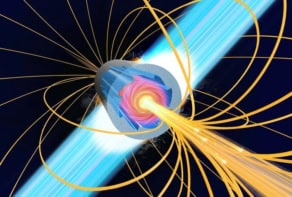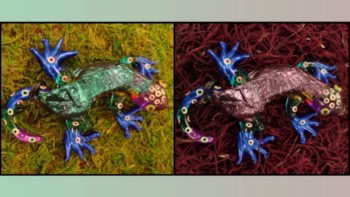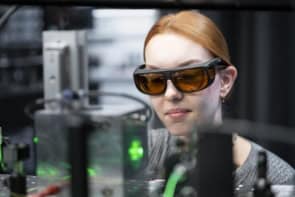Charles Townes, who co-invented the laser, has become the fourth physicist in six years to win the £795,000 Templeton prize for science and religion. The prize is given by the Wall Street financier Sir John Templeton for "progress toward research or discoveries about spiritual realities". Townes -- a practising Christian -- has written numerous articles and papers about science and religion over the past 40 years. Previous winners of the prize include Freeman Dyson, Paul Davies, John Polkinghorne and George Ellis,
Born in 1915 in South Carolina, Townes grew up in a Baptist household that prized intellectual pursuits and vigorous debate about the Bible. He raced through the education system and graduated with degrees in physics and modern languages at the age of 19, before receiving a PhD from Caltech in 1939. After a war-time stint at Bell Telephone Laboratories in New York, Townes joined Columbia University in 1948. It was here in 1951 — while sitting on a park bench — that he had a moment of revelation.
Townes, who was using microwaves to study the structure of molecules, conceived a way of amplifying electromagnetic waves by the stimulated radiation emission. Coming like a bolt from the blue, Townes has repeatedly cited the event as a crystallization of how topics that are normally associated with religion or science — revelation, intuition, observation, faith and aesthetics — can easily apply to both disciplines. Townes helped to build the first working “maser” in 1954 and in 1957 he and his brother-in-law Arthur Schawlow at Bell Labs built the first “laser”, which operated at visible wavelengths.
In 1964 Townes was awarded the Nobel Prize for Physics with the Soviet physicists Aleksander Prokhorov and Nikolai Basov, who — working independently — had also conceived of the idea of a laser. In that year, Townes gave a talk on science and religion at his church in Manhattan. The talk, which was later published in an IBM journal called THINK, caused a storm among scientists when it was republished in an MIT magazine called Technology Review. They saw no room in their profession for anything to do with religion. Townes went on to write papers on the boundary of science and religion, including “Why are we here; where are we going?” in 1997.
“While science and religion may seem different, they have many similarities, and should interact and enlighten each other,” says Townes. “Science tries to understand what our universe is like and how it works, including us humans. Religion is aimed at understanding the purpose and meaning of our universe, including our own lives. If the universe has a purpose or meaning, this must be reflected in its structure and functioning, and hence in science.”


